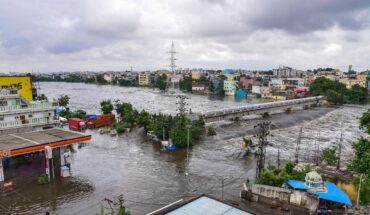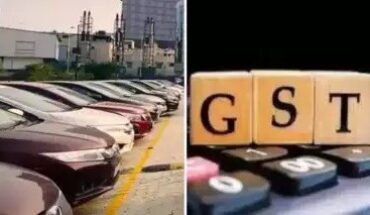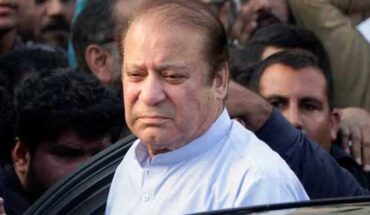In the era of the Covid 19 pandemic, almost all companies in the world extended the facility of work from home (WFH) to their employees. In many companies, the WFH system continues to this day. Some companies have adopted a hybrid model, in which employees are asked to come to the office on some days, while on the rest days they can work from their homes. Many benefits of working from home were directly visible, such as the time spent commuting to the office being saved. Fuel consumption was drastically reduced. There was time for family. Everyone liked the flexibility in working hours. Microsoft recently conducted a survey, in which young people born after 1990 (Gen Z) were asked about their views on this matter.
The report titled ‘Work Trend Index Generation Z’ revealed that sectors that do not have work-from-home facilities are not getting qualified workers. Construction, finance, hospitality, and manufacturing are sectors that are facing the problem of qualified manpower. Most of the youth now prefer to work from home only. That is why technology companies have no shortage of young and qualified employees. After the global recession in 2007, jobs in big banks were rapidly lost, so now graduate youth are more attracted to technology companies than big banks. Perhaps that is why, between 2011 and 2020, the number of young people studying computer science in the UK increased by 50%.
Preparations are being made to push more electric buses into the public transport system in the country. For this, the number of electric buses is being increased. State-owned Convergence Energy Services Ltd. (CESL) has floated a tender for 50,000 new electric buses worth $10 billion (appx Rs 80,000 crore). In order to reduce pollution, the attention of the government and private companies has been drawn towards the electrification of public transport. Looking at the current situation, it seems that in the next 5 to 7 years, most of the vehicles on the Indian roads will be electric models.
In Punjab, where the number of petrol and diesel vehicles is high, the state is lagging behind in the case of electric vehicles. There are hardly about 15,000 electric vehicles (EVs) in Punjab, while in Haryana their number is more than 78,000. It was informed in the Lok Sabha that Punjab has lagged behind in developing vehicle charging infrastructure also. There are only 41 electric charging stations in the state, that too in the private sector. No work has been done in this direction at the government level.
5G facility is going to start in India by the end of this year, for which telecom companies are gearing up rapidly. This will be a service with ten times more speed than the current 4G service. For this, initially, customers may have to pay up to a 20% higher tariff. Also, 5G handsets will also be expensive. When any new technology comes into the market, it is generally expensive. When people start using it on a large scale, that is, the number of customers goes up, then gradually its cost starts decreasing. Telecom companies are assuming that the facility of 5G will be first taken by the customers of urban areas.
Some people may feel that our country lacks facilities and natural calamities are more frequent here. But the reality is that the situation is not good even in western nations. Due to global warming, this time most parts of the US and Europe are facing severe heat. For the first time in the history of Britain, the day temperature has reached 40 degrees. The temperature of 40 degrees may not matter much for us in India, but it is a big problem for the people of London because the temperature there was often only up to 20 degrees. You must have often seen that when British tourists used to come to India, especially in winters, they liked to sit in the sun whenever they got a chance.
There is chaos in London these days. Although the temperature is similar in the US, the severity of heat is being felt more in London. One of the reasons for this is that the houses in the UK are not built according to the high temperature. There was never any heat there, so there is no facility to install ACs in those houses. There is not a facility for cross ventilation to exhaust the air. For this reason, the heat is bothering the people of London more. It is also being said that not only this year, but the countries of Europe will have to face the problem of heat for many years to come. The biggest reason behind the high temperature is global warming. For this reason, the incidents of forest fires have increased rapidly in European countries. Prince Charles also said in his statement that global warming is not a fantasy, but the problem has now reached our homes. Everyone needs to think about this.
The interest of filmmakers in Kashmir is showing again. Tourism is already on the rise in Kashmir. Millions of tourists have reached Kashmir in the previous months. Now filmmakers from all over the country and abroad are applying for shooting there. The Jammu and Kashmir Film Development Council (JKFDC) has received over 500 applications for the shooting of films this year which is a record. In the 70s and 80s, a large number of films were shot in Kashmir Valley. Then there was the era of terrorism, due to which everything stopped, but now the atmosphere is changing rapidly. That is why the shooting of feature films is going to be done once again in the valleys of Kashmir. About 130 applications have been approved so far, many of which have finalized their locations also. JKFDC has implemented Single Window System for permissions, which saves time for the film producers and facilitates the approvals. Security is also provided by the government at the time of the shooting.
The writer is a senior journalist & columnist. Views are personal
Twitter @NarvijayYadav





